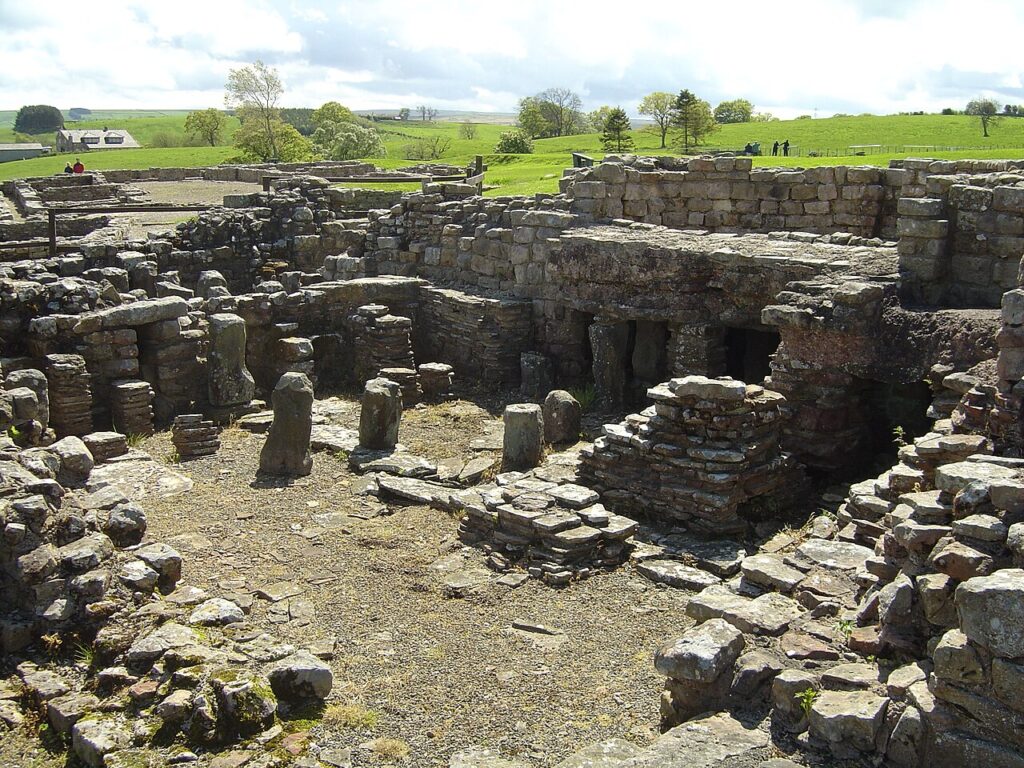Vindolanda

Vindolanda is an ancient Roman auxiliary fort located just south of Hadrian’s Wall in Northumberland, England. Dating back to around 85 AD, Vindolanda was one of the key military outposts along the Roman frontier, strategically positioned to oversee and protect the northernmost borders of the Roman Empire. The site has undergone numerous phases of occupation and abandonment, leading to an extensive accumulation of artifacts that offer a deep insight into Roman military and civilian life.
The Vindolanda site is particularly renowned for its exceptional preservation conditions, especially in its anaerobic layers where oxygen deprivation has preserved organic materials like leather, wood, and textiles. Among the most significant discoveries are the Vindolanda tablets—thin wooden postcards written in ink, which are among the oldest surviving handwritten documents in Britain. These tablets provide a unique glimpse into the everyday lives of soldiers and their families, covering topics from military orders to personal letters.
In addition to the everyday items, Vindolanda has also yielded a range of religious artifacts that reflect the spiritual life of its inhabitants. The majority of these are related to traditional Roman paganism, with numerous altars, inscriptions, and votive offerings dedicated to various gods and goddesses. However, one of the more intriguing aspects of Vindolanda’s archaeological record is the evidence of early Christian worship.
Christianity is believed to have been present in Britain during the later years of Roman rule, and Vindolanda provides some of the earliest evidence of this in the form of Christian symbols and artifacts. Among these is a small, delicately carved chalice featuring Christian symbols, likely used in early Christian worship. Additionally, graffiti featuring the Chi-Rho symbol—an early Christian monogram formed by superimposing the first two letters of “Christ” in Greek—has been found inscribed on pottery fragments and walls. These findings suggest that by the 4th century, there was a Christian presence at Vindolanda, indicating a shift in religious practices from the traditional Roman pantheon to Christianity.
The discovery of these Christian artifacts at Vindolanda is significant as it not only provides evidence of the spread of Christianity to the far reaches of the Roman Empire but also highlights the coexistence of different religious practices within the military community. Today, Vindolanda remains an active archaeological site, with ongoing excavations continuing to uncover new aspects of life on the Roman frontier.
